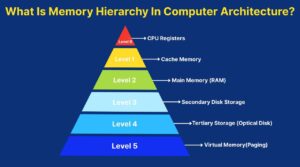Classification of Computer Software
1. Introduction
Computers have become an essential part of modern life. From performing simple calculations to controlling spacecraft, computers play a significant role in every field. However, the true power of a computer lies not just in its hardware, but in the software that runs on it. Hardware without software is like a body without a soul—it cannot function.
The term software refers to a set of programs, procedures, and documentation that instruct the computer on how to perform specific tasks. In simple words, software tells the hardware what to do and how to do it.
Computer software can be broadly classified into different categories based on its purpose, functionality, and the type of work it performs. The two main categories are System Software and Application Software, but other specialized types also exist, such as Utility Software, Programming Software, Driver Software, and Open Source/Proprietary Software.
This assignment discusses the classification of computer software, its characteristics, functions, and examples, providing a comprehensive understanding of how different types of software work together to make a computer system functional and efficient.
2. Meaning and Definition of Software
The word software refers to the intangible part of a computer system — the set of programs and instructions that enable the hardware to perform specific tasks.
Definition (by IEEE):
“Software is a collection of computer programs, procedures, rules, and associated documentation and data that provide desired functionality.”
Definition (Simple):
“Software is a collection of instructions that tell the computer what to do.”
Thus, while hardware represents the physical components of a computer system, software represents the logical or operational part.
3. Characteristics of Software
The key characteristics of software include:
- Intangible: Software cannot be touched or seen; it exists as digital instructions.
- Developed, Not Manufactured: Software is created through coding and design, not assembled like hardware.
- Easily Modified: Software can be updated or modified to fix errors or add new features.
- Portable: The same software can often run on multiple devices or platforms.
- Dependent on Hardware: Software cannot operate without hardware support.
- Subject to Errors (Bugs): Even small coding mistakes can cause malfunction.
- No Physical Deterioration: Unlike hardware, software does not wear out, though it can become outdated.
4. Classification of Computer Software
The software in a computer system is broadly classified into two major categories:
- System Software
- Application Software
Additionally, there are Utility Software, Programming Software, Driver Software, and Middleware Software that support these two main categories.
The complete classification is shown below:
Computer Software
│
├── System Software
│ ├── Operating System
│ ├── Device Drivers
│ └── Utility Programs
│
├── Application Software
│ ├── General Purpose Software
│ ├── Customized Software
│ └── Web Applications
│
├── Programming Software
│ ├── Compilers
│ ├── Assemblers
│ └── Debuggers
│
├── Middleware Software
│
└── Driver Software
Let’s understand each category in detail.
5. System Software
System Software acts as an interface between hardware and user-level applications. It controls, coordinates, and manages the hardware components of a computer system. Without system software, the computer cannot function.
Definition
System software is a type of computer program designed to operate and control the computer’s hardware and to provide a platform for running application software.
Functions of System Software
- Controls hardware components.
- Manages system resources like memory and CPU.
- Facilitates communication between user and machine.
- Provides basic functionalities such as file management and input/output handling.
Types of System Software
5.1 Operating System (OS)
An Operating System is the most important system software that manages all hardware and software resources. It acts as an interface between the user and the hardware.
Functions:
- Manages memory, CPU, and storage.
- Controls input/output devices.
- Provides a user interface (GUI or CLI).
- Manages files and directories.
- Schedules processes and multitasking.
Examples:
- Windows
- Linux
- macOS
- Android
- iOS
5.2 Device Drivers
Device drivers are specialized programs that enable the operating system to communicate with hardware devices such as printers, keyboards, and graphics cards.
Functions:
- Translate OS commands into device-specific instructions.
- Ensure proper working of hardware components.
- Allow plug-and-play functionality.
Examples:
- Printer drivers
- Audio drivers
- Network drivers
Without proper drivers, connected devices will not work correctly.
5.3 Utility Programs
Utility programs are tools that help manage, maintain, and protect computer resources. They perform specific tasks that support the operating system.
Functions:
- File management
- Disk cleanup and defragmentation
- Antivirus protection
- Backup and recovery
- Compression and encryption
Examples:
- WinRAR, 7-Zip (File compression)
- CCleaner (System maintenance)
- Norton Antivirus (Security)
- Backup tools (System Restore)
6. Application Software
Application Software refers to programs designed to perform specific tasks or solve particular problems for the user. Unlike system software, it is not essential for running the computer but helps the user accomplish practical functions.
Definition
Application software is a set of programs designed for end-users to perform specific functions such as word processing, accounting, gaming, or graphic design.
Functions
- Helps users complete daily tasks.
- Simplifies complex operations like data analysis or report generation.
- Increases productivity and efficiency.
- Provides a user-friendly interface.
Types of Application Software
6.1 General Purpose Application Software
These are ready-made software packages designed for a wide range of common user needs.
Examples:
- Microsoft Word, Excel, PowerPoint (Office tools)
- Google Chrome, Mozilla Firefox (Web browsers)
- VLC Media Player (Media software)
- Photoshop (Image editing)
6.2 Customized Software
Customized software is developed to meet the specific requirements of an individual organization or user.
Examples:
- School Management System
- Hospital Management System
- Banking Software
- Railway Reservation System
Customized software is often more expensive but tailored for unique needs.
6.3 Web-Based Application Software
These are applications that run on web browsers instead of local devices.
Examples:
- Google Docs
- Gmail
- YouTube
- Online Banking Portals
Web applications are popular due to easy access, cloud storage, and no need for installation.
6.4 Mobile Application Software
Designed specifically for smartphones and tablets, mobile apps allow users to perform a wide range of functions.
Examples:
- WhatsApp, Instagram, Twitter
- Zomato, Swiggy, Uber
- Paytm, PhonePe (Payment apps)
Mobile apps combine features of web and desktop applications for convenience and portability.
7. Programming Software
Programming software provides tools that help programmers develop, debug, and maintain other software applications. It acts as a bridge between human logic and machine instructions.
Functions:
- Write source code.
- Compile or translate code into machine language.
- Test and debug programs.
Types of Programming Software
7.1 Compiler
A compiler translates high-level programming language (like C, C++, or Java) into machine code.
Example: GCC (GNU Compiler), Turbo C.
7.2 Interpreter
An interpreter translates and executes code line by line, making it easier for debugging.
Example: Python Interpreter, JavaScript Engine.
7.3 Assembler
Assembler converts assembly language programs into machine code.
Example: MASM, NASM.
7.4 Debugger
A debugger helps identify and fix errors (bugs) in the source code.
Example: GDB, Visual Studio Debugger.
8. Driver Software
Driver software is a specialized type of system software that enables communication between the operating system and hardware devices.
Example:
- Printer driver allows the OS to send print commands.
- Graphics driver allows better rendering of visuals and games.
Without drivers, hardware devices cannot function correctly.
9. Middleware Software
Middleware acts as a communication layer between different software applications or systems. It enables data exchange in distributed environments like client-server systems or cloud networks.
Examples:
- Database middleware (ODBC, JDBC)
- Message-oriented middleware (RabbitMQ, Kafka)
- API gateways and service buses
Middleware is essential for modern enterprise and web-based systems where multiple applications need to interact seamlessly.
10. Utility Software (Detailed View)
Though classified under system software, utility programs deserve separate discussion because of their importance.
Functions:
- System diagnosis and performance monitoring.
- Security (antivirus and firewall).
- Data compression and backup.
- File and disk management.
Examples:
- Disk Cleanup Tools
- Antivirus programs (McAfee, AVG)
- Data Recovery Tools
- System Monitoring Tools
Utility software enhances system performance, security, and reliability.
11. Open Source vs. Proprietary Software
Software can also be classified based on ownership and licensing.
11.1 Open Source Software
Open source software allows users to view, modify, and distribute the source code freely.
Examples:
- Linux
- Apache Web Server
- LibreOffice
- Mozilla Firefox
Advantages:
- Free or low-cost.
- High customization.
- Strong community support.
Disadvantages:
- May lack official technical support.
- Security risks if not maintained properly.
11.2 Proprietary Software
Proprietary software is owned by an individual or organization. Its source code is closed, and users must purchase a license to use it.
Examples:
- Microsoft Windows
- Adobe Photoshop
- Microsoft Office
Advantages:
- Reliable technical support.
- Regular updates and patches.
Disadvantages:
- Expensive licensing.
- Limited customization.
12. Freeware, Shareware, and Firmware
12.1 Freeware
Software available free of cost for use but not for modification.
Example: Google Chrome, Adobe Acrobat Reader.
12.2 Shareware
Software distributed freely for trial use, but requires payment for full functionality.
Example: WinRAR, Internet Download Manager (IDM).
12.3 Firmware
Firmware is software programmed into the hardware itself (like BIOS or routers). It provides low-level control over the hardware device.
13. Importance of Software Classification
Understanding the classification of software helps in:
- Selecting appropriate tools for specific tasks.
- Efficient system management and maintenance.
- Software development and compatibility testing.
- Enhancing user productivity.
- Budget planning for organizations based on software type and license.
14. Relationship Between Hardware and Software
Hardware and software are interdependent.
- Hardware performs physical operations.
- Software gives instructions to control those operations.
Without software, hardware cannot function; without hardware, software has no platform to run. Together, they form a complete computer system.
15. Conclusion
Software is the backbone of modern computing systems. It transforms static hardware into a dynamic, intelligent system capable of performing countless tasks. By classifying software into system software, application software, utility software, driver software, middleware, and programming software, we can better understand their individual purposes and interrelations.
System software manages hardware and provides a platform for applications, while application software fulfills user-specific needs. Utility and driver programs ensure smooth functioning, and programming software enables the creation of new applications.
In summary, the classification of computer software is essential to understand how computers function efficiently and serve diverse user needs across education, business, healthcare, research, and entertainment.






Post Comment